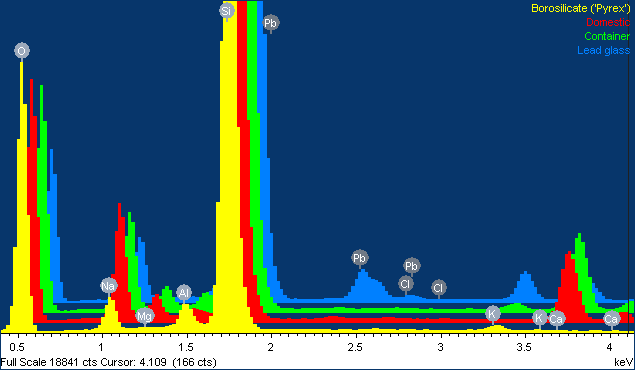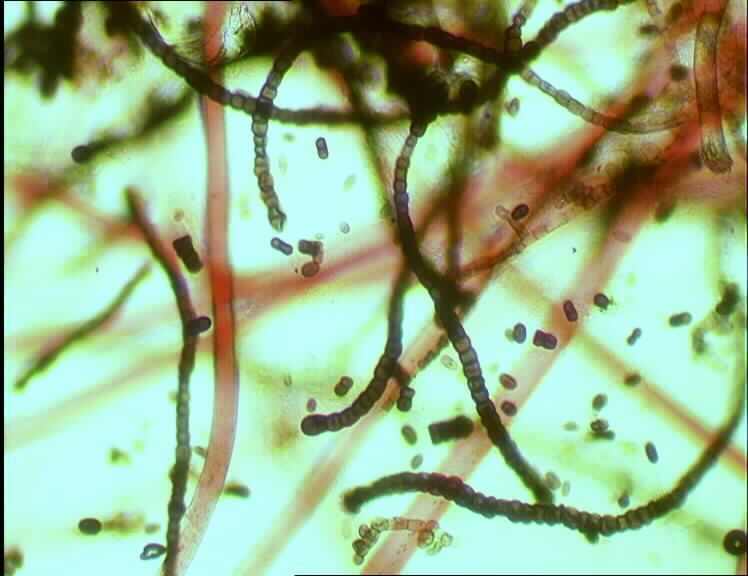
June 2021
Physical issues with a food product cover a range of different aspects which for this statement will cover two areas:
- Physical contaminants (e.g. ‘foreign bodies’) – detection and analysis
- Specification /Quality issues – including weight of product; texture and taste
The main concern when making a product is consumer safety. For more information see IFST information statements: ‘Microbiological Analysis - key considerations’ and ‘Chemical Analysis - key considerations’. Also, of importance is specificity and consumer acceptability which depends on the quality of the product. Quality covers a wide range of attributes including authenticity, taste, texture, the presence of off-flavours, unsightly appearance, underweight content and the presence of foreign matter. Some of these are personal to individual consumers while others, such as weight of product and the presence of foreign matter, are governed by legal requirements. All affect the consumer attitude to future purchase, and some might impact on health and safety. It is important, therefore, to test for quality and to know which tests are suitable.
Physical contaminants or foreign bodies should not be present in foods and, if they are, legal action might be taken against food companies for example pursuant to Section 14 of the Food Safety Act 1990 which makes it an offence to sell to the purchaser’s prejudice any food which is not of the nature or substance or quality demanded: Food Safety Act 1990.
Physical contaminants can be intrinsic (associated with ingredients) or extrinsic (completely foreign objects) and it is important to be able to identify what the object is to: assist investigation; avoid further contamination; decide whether a product recall is needed; fulfil legal obligations, reassure consumers and protect the brand.
The main screen for physical contaminants is at the manufacturing stage using sieves and/or online detectors. There are various online systems available depending on the type of contamination likely and a number of these are listed by Edwards (2004) and Wright and Severs (2018).
Main issues for analysis are objects found in the food product, either by the consumer (complaint) or by the factory quality control. These objects vary considerably, and this can make choosing the method of analysis difficult.
If microbial origin is suspected, then sample for this first before doing any other testing. Samples should, where possible, be sent to the laboratory as discovered in a product and packaged carefully to avoid breakage during transit. An optimum outline workflow for a laboratory is suggested in Figure 1. All findings must be contemporaneously permanently documented.
Figure 1: Suggested optimum workflow for a laboratory investigating physical contaminants
Light microscopy (stereo and compound) – an essential first step for all contaminants. Stereomicroscopy is useful for determining shape, size, and overall appearance as well as visualising “hidden” structures. In the compound microscope, contrast techniques such as polarised light give information on crystallinity and stress (such as in toughened glass). The application of staining reagents may give an indication of starch, protein, carbohydrate, microbes. Appearance is often characteristic e.g. striations in skeletal muscle, mould hyphae, presence of starch granules and plant structures, as well as identifying hairs and other fibres. Shape, form and physical marks, either manufactured or damage related are also relevant e.g. flat or rounded glass, plastic or metal, to differentiate origin. Thereafter selected further analysis may be carried out, for example as follows.
- FT-IR or similar spectroscopy – particularly useful for organic materials as well as some inorganics. The laboratory should have reference material or a good database. In this technique, the sample is irradiated with infra-red light and some is absorbed and some transmitted. The result is a spectrum that gives a molecular fingerprint of the sample. This can then be compared with the spectrum of a known reference. If the sample contains water, then either drying or the use of FT-Raman spectroscopy is preferable.
- SEM and EDX – gives a higher magnification of the structure and elemental composition and distribution. X-rays produced when the sample is irradiated by the electron beam in the SEM have characteristic energies resulting in a spectrum that shows which elements are present. Can often be quantified and is very useful for most contaminants. For example, indicating metal type and given a good database, glass can be assigned a group such as domestic, window, container etc. Distribution of elements with the structure can be used to identify coatings, scratches, or inclusions.
- EDXRF (X-ray fluorescence) – also gives elemental composition, as above but faster, although detects total elements only (unless X-ray microfluorescence used). Useful for glass.
- Insects – best to refer to a specialist laboratory for species identification and origin, as this often helps the manufacturer to know where the insect might have entered the product. For example, ants or wasps in a sweet product or cocoa moth in a chocolate product. A simple filth test (AOAC, 2012. Official methods of analysis, 19th rev. ed. Association of Official Analytical Chemists, Washington, DC, USA.) or confirmation of insects might be all that is required if identification is not needed.
- Temperature history – for example ‘has it been cooked in the factory?’ Biological material can be analysed using a test for phosphatase enzyme, since nearly all biological materials contain phosphatase. Developed to check pasteurisation of milk but applied to insects and also meat products. Be aware that false positives can be obtained if there is sufficient microbial contamination as these also contain the enzyme. False negatives can also occur if the contaminant or product is too old, or if the associated ingredients destroy the enzyme, for example some highly acidic products can inactivate the enzyme. Not suitable for non-biological material.
- Animal droppings - identify shape and size and examine under the microscope for the presence of hairs which can be used for identification – e.g. rodent vs domestic pet. Thin layer chromatography can be used to confirm if the contamination is a dropping; other contaminants such as ergot or flour improver can often look like droppings.
- Packaging issues and contamination – examine under the microscope to determine whether seals are intact, or for example, if insects have chewed from outside in or inside out, look for corrosion or incomplete coating in cans.
Quality of a product covers a wide range of attributes including authenticity, texture; bubble size; colour; taste/taint and shelf-life
- Weight: weights of packaged foods and drinks are regulated by law (Weights and measures: the law) and so should be checked to ensure that either the minimum weight or the average (three packers rules) are followed.
- Texture: no detailed legal requirements for texture or taste, but these obviously affect the quality, and it is part of food law that the product should be of the quality expected. Texture tests can show hardness, brittleness, crispness etc with typical equipment being a texture analyser (e.g. SMS, Instron). Viscosity or flow properties can be measured using rheological testing equipment. Taste can be assessed using trained panels or consumer panels; Off- tastes may be identified by chemically testing for rancidity or taints. Rancidity can develop from oxidation of fats or oils present in the product. Frequently encountered taints are musty, soapy or antiseptic tastes and can be analysed using a combination of trained sensory panels followed by targeted chemical analysis (review, Ridgway et al 2010). Once identified the source of the problem can often be determined.
- Other properties: the quality of a product can be affected from a manufacturing or ingredient change. Examples include bubble size in aerated products, stability of emulsions, sediments in drinks, pollen identification in honey. Methods used to help solve the problem include light and electron microscopy and physical testing.
- Shelf-life: use by dates are required for food safety and foods should not be sold after that date. Microbiological testing is used to determine these. Best before dates are a measure of quality, not safety, and so foods are safe to eat after that date but will not necessarily be of the best quality. Shelf-life testing is usually carried out to determine these dates, with accelerated testing used for long date products.
- Authenticity: it is important both for manufacturing quality, consumer trust and safety that an ingredient is authentic. It is not always easy to analyse for authenticity since the ingredient might be contaminated or replaced with anything and made to look similar. Methods used to help authenticate ingredients include spectroscopy, microscopy, molecular biology and chemical analysis. For more information see: IFST Information Statement ‘Food authenticity testing part 2: Analytical techniques’.
- Choking hazards: includes product or ingredients that pose a risk of choking to consumers due to swelling of certain ingredients, such as specific polysaccharides or starches, and inclusions (e.g. hard sweets). Some food products aimed at children contain toys that could be a choking risk. For test methods see this paper for more information.
FT-IR: Fourier transform infrared spectroscopy
SEM: Scanning electron microscopy
EDX: Energy dispersive x-ray analysis
EDXRF: Energy dispersive x-ray fluorescence
SMS: Stable microsystems
- 'Detecting Foreign Bodies in Food' edited by M Edwards (2004): Woodhead publishing ISBN: 978-1-85573-729-7
- 'Food Inspection Technology' R Wright & J Severs (2018): J Inst. Food Sci & Technol 32 (2).
- 'Analysis of Food Taints and off-flavours - A review' Ridgway, Kathy; Lalljie, Samuel; Smith, Roger; (2010)
- Guidance on date labelling
- Guidance on weights and measures
- Association of Public Analysts Mastership in Chemical Analysis Examination Training Guide Food Complaints
- AOAC, 2012. Official methods of analysis, 19th rev. ed. Association of Official Analytical Chemists, Washington, DC, USA.
- Assessments of choking tests
Figure 2: Glass analysis. This shows typical X-ray spectra from four different glass types. All contain Silicon and Oxygen but differ in the presence and amounts of other elements. Using quantitative analysis together with the appearance, the category of glass such as ‘Pyrex’-type, domestic, container or window, for example, can be confidently predicted, even from fragments of less than 1 mm.

Figure 3: Unknown contaminant. A customer complaint of red and black ‘fibres’ found in a food product showed that under the light microscope (image below), although the red fibres were synthetic textile fibres, the black component was mould and not fibres at all.

Institute of Food Science & Technology has authorised the publication of the following Information Statement on Physical Analysis - key considerations.
This updated Information Statement has been prepared by Professor Kathy Groves FIFST, peer-reviewed by professional members of IFST and approved by the IFST Scientific Committee.
This information statement is dated June 2021.
The Institute takes every possible care in compiling, preparing and issuing the information contained in IFST Information Statements, but can accept no liability whatsoever in connection with them. Nothing in them should be construed as absolving anyone from complying with legal requirements. They are provided for general information and guidance and to express expert professional interpretation and opinion, on important food-related issues.
